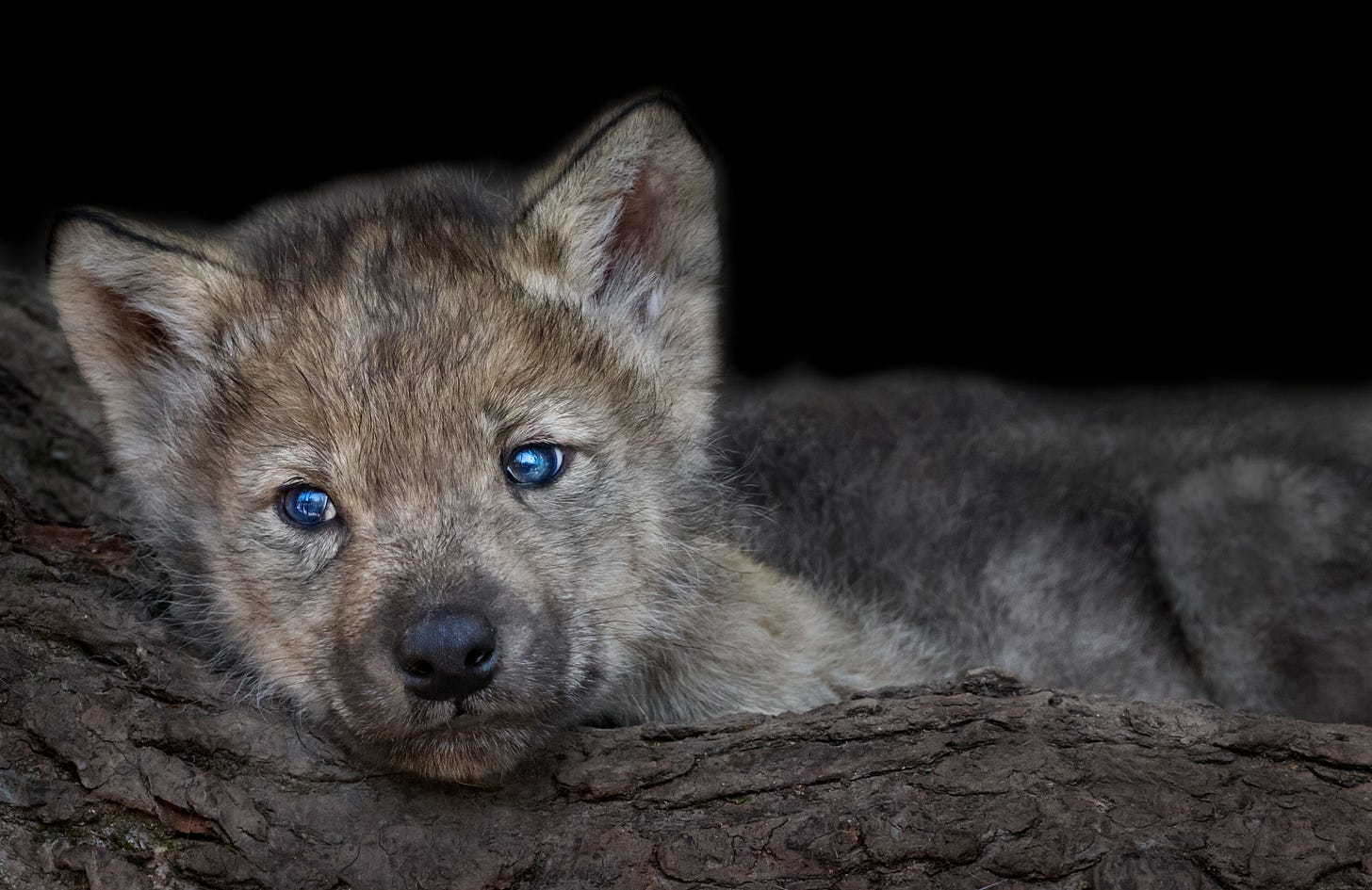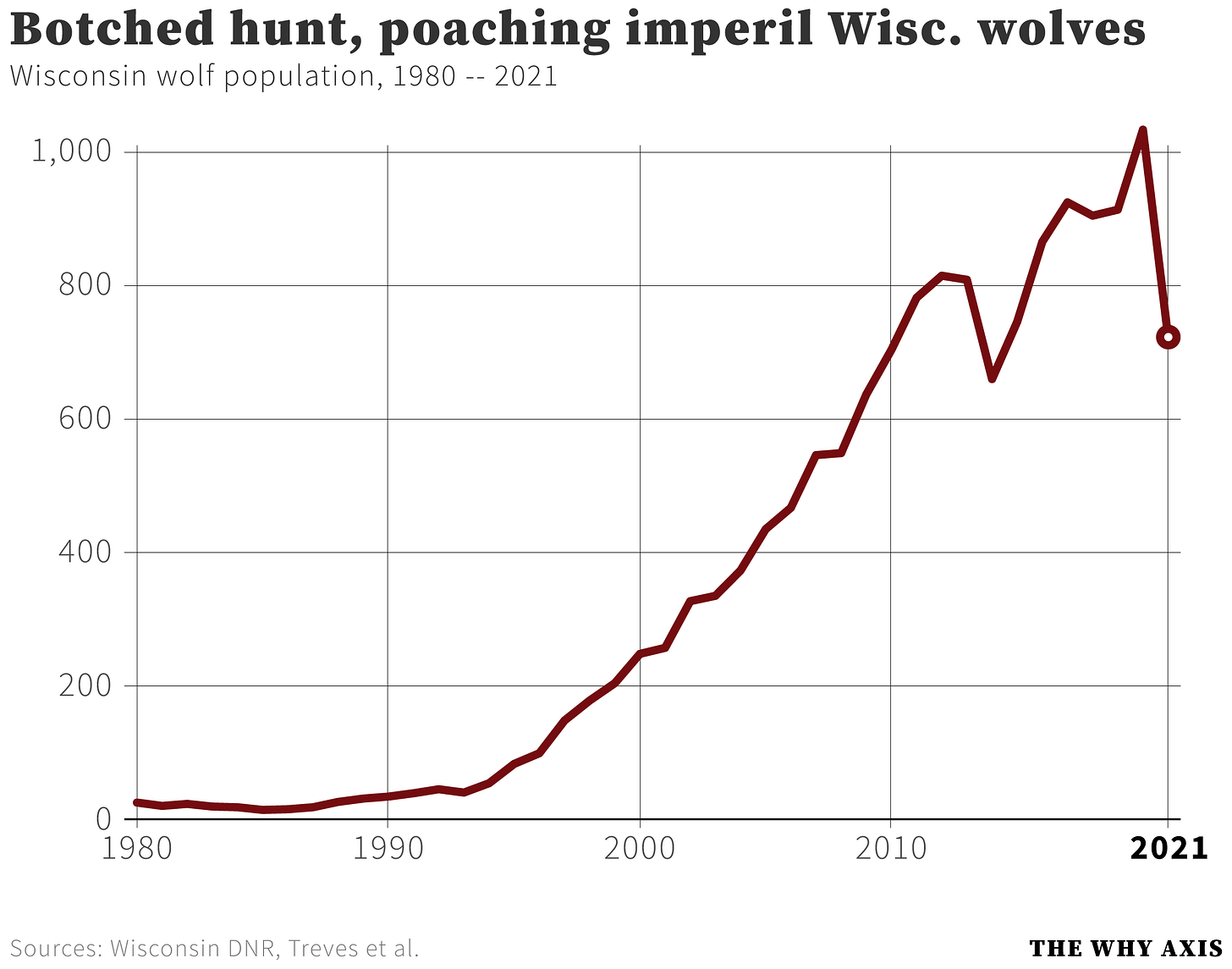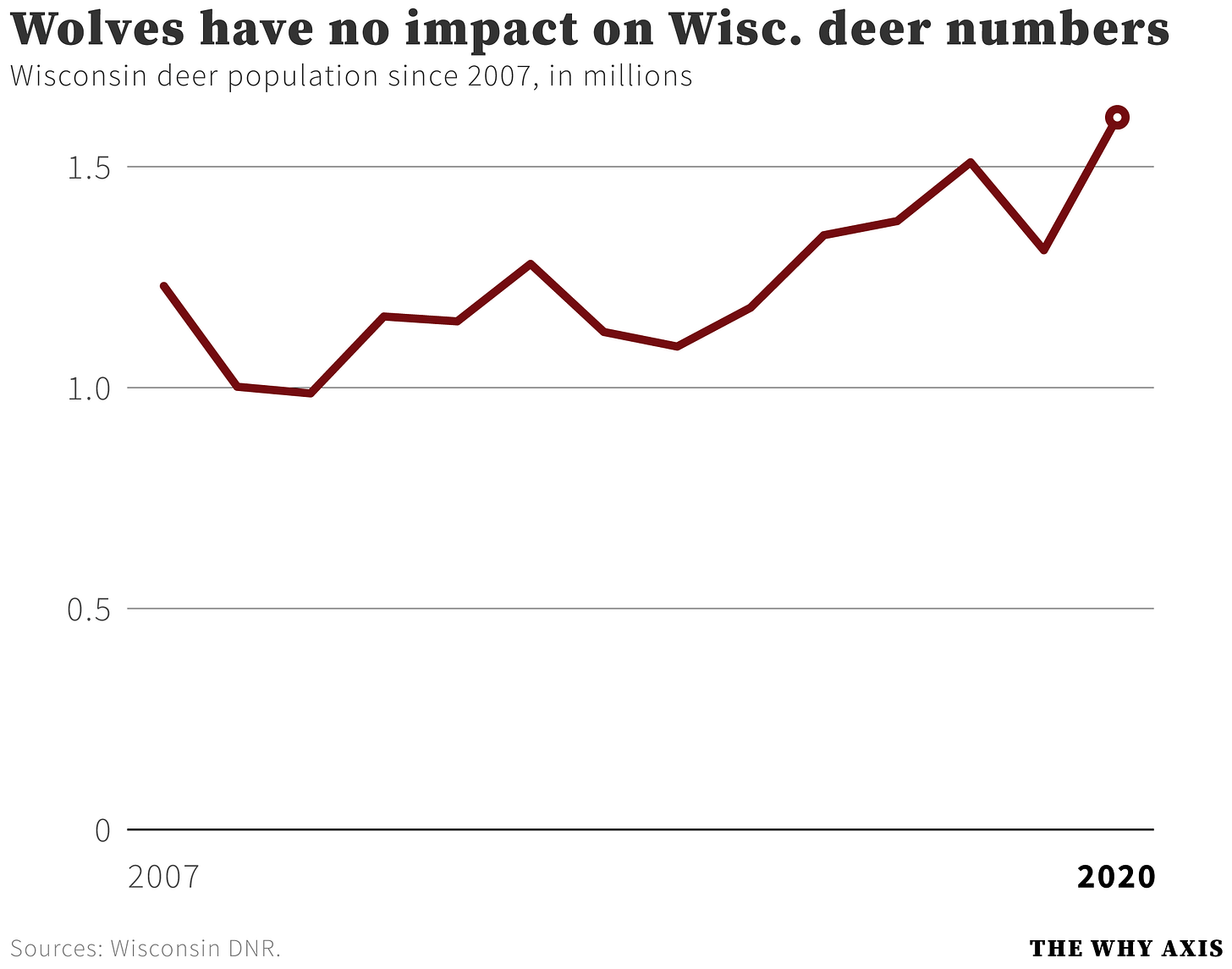Wolf hunters driven by bloodlust, not conservation
Some men simply want to watch beautiful things die
The Wisconsin Natural Resources Board recently approved a wolf harvest quota of 300 wolves for the 2020 fall hunt, overriding the state’s Department of Natural Resources, which recommended less than half that amount. The move comes directly on the heels of the state’s botched spring hunt, during which overzealous hunters, aided by poachers, blew past the previous quota and wiped out 30 percent of the state’s wolf population in just two days.
The killing frenzy followed the Trump administration’s decision last fall to remove wolves from the Endangered Species List in the lower 48 states, paving the way for hunting in Wisconsin and elsewhere.
The thing about wolf hunting, especially as opposed to the hunting of deer and ducks and other animals, is that from a conservation standpoint there’s little to no justification for it. Grey wolf populations in the lower 48 states have only just recently started to reach sustainable levels following their near-eradication in the 20th century. There are maybe 20,000 animals left in the United States, with nearly half of them in Alaska. From a population standpoint the death of a single wolf is a devastating event in the way that the death of, say, a white-tail deer — with a nationwide population of around 30 million — is not.
When the Trump administration de-listed wolves it invited the nation’s leading wolf experts to review the proposal. The experts near-unanimously panned the justification of the move for its “demonstrable errors of fact, interpretation, and logic” and for statements that “misrepresent” wolf ecology. One reviewer had to append 48 pages of “missing information” on “human-caused mortality, human attitudes leading people to kill wolves, the effects of legal killing on illegal killing” and other relevant topics.
Would-be wolf hunters tend to cite two main reasons for why they “need” to kill the beasts. The first is the uproariously false belief that wolves are “decimating” the populations of other game animals like deer. “There are very few deer left up north,” lamented one Wisconsin wolf hunting proponent recently. “Sit in the stand all day and all you see is wolves and no deer.”
Deer numbers in Wisconsin are actually on the rise, and significantly so.
Data from the state shows that even populations of deer in northern counties, where the wolves are most prevalent, are either flat or on the upswing. The notion that a population of several hundred wolves can put a meaningful dent in a statewide deer herd approaching 2 million strong is farcical. If you can’t bag a deer in northern Wisconsin it’s not because of wolves, it’s because you’re a shitty hunter.
In other states hunter complaints have focused on the alleged effect of wolves on elk or moose populations. The data simply don’t support this, at all. The biggest impacts on hoofed mammal populations come from winter severity, hunter pressure, and habitat loss.
The other major talking point from wolf hunting advocates is that the animals prey on livestock. In reality this is a virtually non-existent problem. Official figures from the state of Wisconsin, for instance, show that in 2020 there were confirmed wolf attacks on roughly 50 cattle out of a statewide population of 3.45 million. Wisconsin cattle farmers, in other words, lost 0.0014 percent of their herd to wolves. The farmers are compensated by the state for these losses, despite nearly all of them being incredibly wealthy. The typical net worth of a family cattle farmer in 2019, for instance, was $3.7 million dollars, according to USDA data.
The situation is similar in other states, with government handouts going to a cohort of incredibly wealthy landowners to compensate for infinitesimal losses to wolf predation.
Other wolf-killing proponents say the practice is necessary because wolves are a threat to family pets. Here’s an idea: don’t let your Pomeranian run around unsupervised in wolf country. Problem solved.
When you strip away these delusions you’re left with one conclusion: wolf hunters are driven primarily by bloodlust. Some men simply want to kill things, and the more rare a thing is the more they wish to see it dead by their hands.





Excellent essay. The last paragraph says it all.